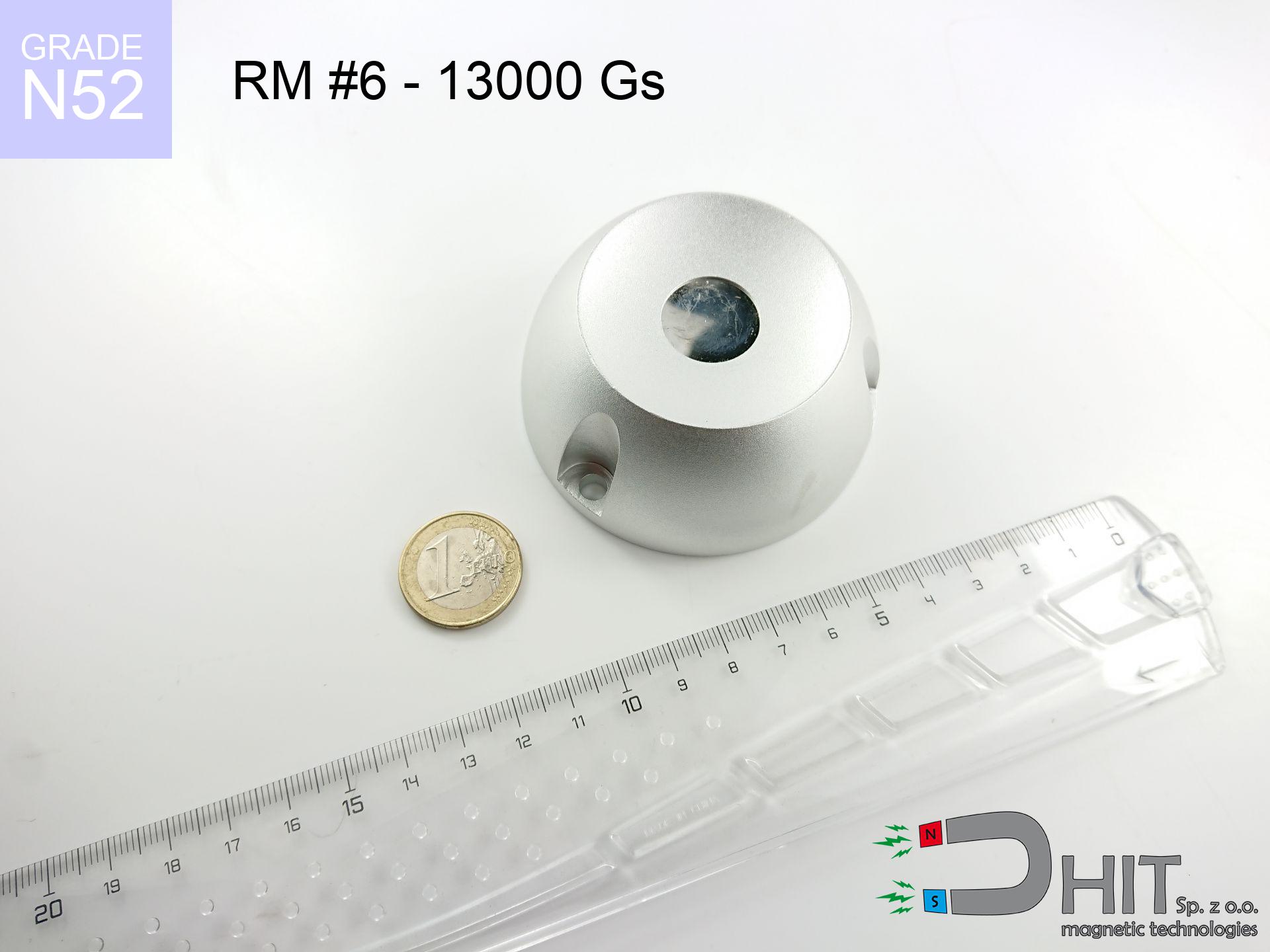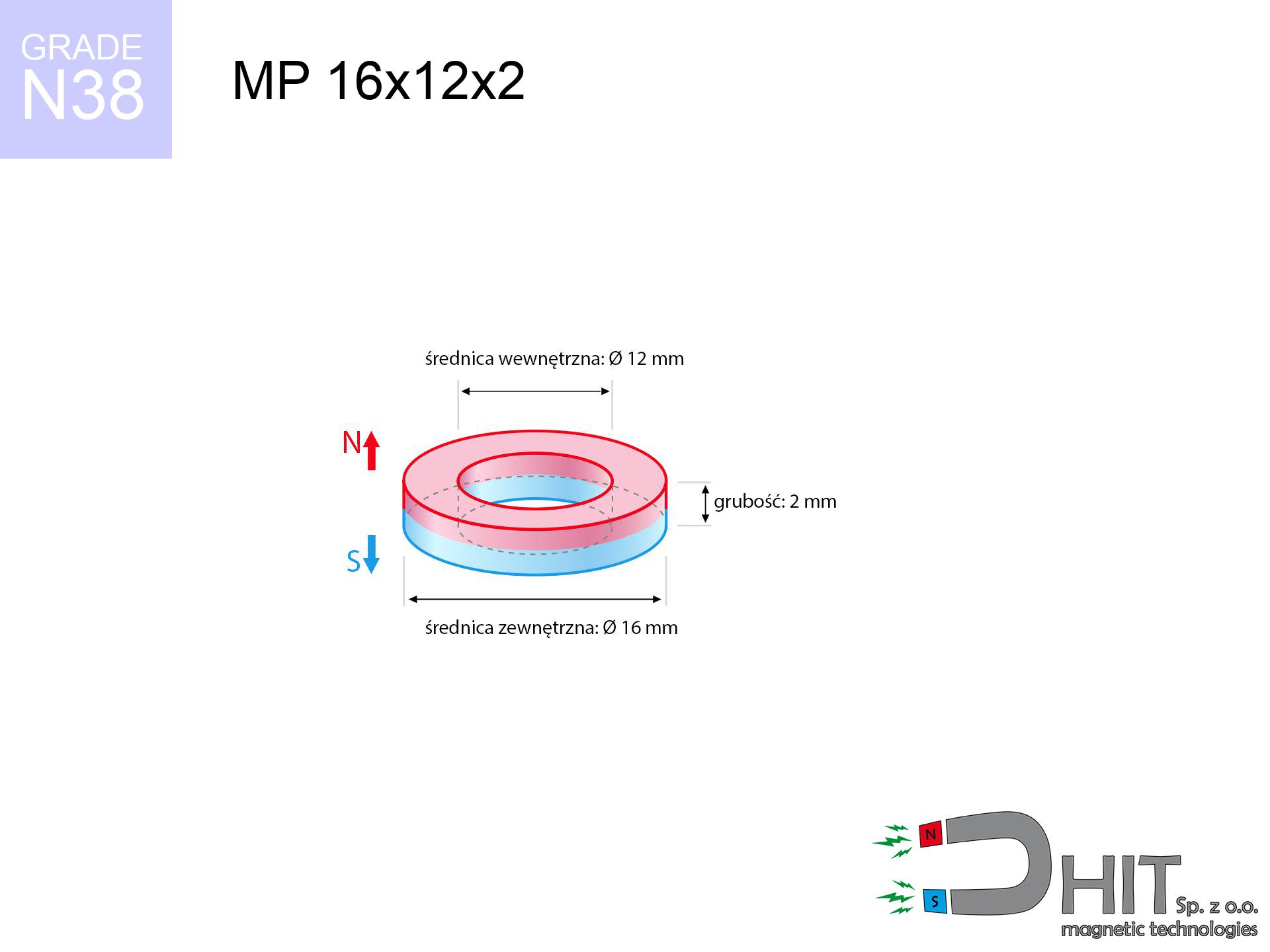UMGZ 48x24x11.5 [M8] GZ / N38 - magnetic holder external thread
magnetic holder external thread
Catalog no 190415
GTIN/EAN: 5906301813866
Diameter Ø
48 mm [±1 mm]
Height
24 mm [±1 mm]
Height
11.5 mm [±1 mm]
Weight
140 g
Load capacity
80.00 kg / 784.53 N
59.90 ZŁ with VAT / pcs + price for transport
48.70 ZŁ net + 23% VAT / pcs
bulk discounts:
Need more?
Contact us by phone
+48 888 99 98 98
otherwise send us a note through
form
our website.
Force along with shape of neodymium magnets can be reviewed using our
force calculator.
Same-day processing for orders placed before 14:00.
Technical specification - UMGZ 48x24x11.5 [M8] GZ / N38 - magnetic holder external thread
Specification / characteristics - UMGZ 48x24x11.5 [M8] GZ / N38 - magnetic holder external thread
| properties | values |
|---|---|
| Cat. no. | 190415 |
| GTIN/EAN | 5906301813866 |
| Production/Distribution | Dhit sp. z o.o. |
| Country of origin | Poland / China / Germany |
| Customs code | 85059029 |
| Diameter Ø | 48 mm [±1 mm] |
| Height | 24 mm [±1 mm] |
| Height | 11.5 mm [±1 mm] |
| Weight | 140 g |
| Load capacity ~ ? | 80.00 kg / 784.53 N |
| Manufacturing Tolerance | ±1 mm |
Magnetic properties of material N38
| properties | values | units |
|---|---|---|
| remenance Br [min. - max.] ? | 12.2-12.6 | kGs |
| remenance Br [min. - max.] ? | 1220-1260 | mT |
| coercivity bHc ? | 10.8-11.5 | kOe |
| coercivity bHc ? | 860-915 | kA/m |
| actual internal force iHc | ≥ 12 | kOe |
| actual internal force iHc | ≥ 955 | kA/m |
| energy density [min. - max.] ? | 36-38 | BH max MGOe |
| energy density [min. - max.] ? | 287-303 | BH max KJ/m |
| max. temperature ? | ≤ 80 | °C |
Physical properties of sintered neodymium magnets Nd2Fe14B at 20°C
| properties | values | units |
|---|---|---|
| Vickers hardness | ≥550 | Hv |
| Density | ≥7.4 | g/cm3 |
| Curie Temperature TC | 312 - 380 | °C |
| Curie Temperature TF | 593 - 716 | °F |
| Specific resistance | 150 | μΩ⋅cm |
| Bending strength | 250 | MPa |
| Compressive strength | 1000~1100 | MPa |
| Thermal expansion parallel (∥) to orientation (M) | (3-4) x 10-6 | °C-1 |
| Thermal expansion perpendicular (⊥) to orientation (M) | -(1-3) x 10-6 | °C-1 |
| Young's modulus | 1.7 x 104 | kg/mm² |
Material specification
| iron (Fe) | 64% – 68% |
| neodymium (Nd) | 29% – 32% |
| boron (B) | 1.1% – 1.2% |
| dysprosium (Dy) | 0.5% – 2.0% |
| coating (Ni-Cu-Ni) | < 0.05% |
Ecology and recycling (GPSR)
| recyclability (EoL) | 100% |
| recycled raw materials | ~10% (pre-cons) |
| carbon footprint | low / zredukowany |
| waste code (EWC) | 16 02 16 |
See also offers
Advantages and disadvantages of neodymium magnets.
Advantages
- They do not lose strength, even after around 10 years – the reduction in lifting capacity is only ~1% (according to tests),
- Magnets effectively defend themselves against loss of magnetization caused by ambient magnetic noise,
- A magnet with a metallic gold surface looks better,
- The surface of neodymium magnets generates a powerful magnetic field – this is one of their assets,
- Neodymium magnets are characterized by very high magnetic induction on the magnet surface and can work (depending on the shape) even at a temperature of 230°C or more...
- Thanks to freedom in shaping and the ability to modify to unusual requirements,
- Fundamental importance in modern industrial fields – they are utilized in data components, electric drive systems, advanced medical instruments, also other advanced devices.
- Thanks to their power density, small magnets offer high operating force, in miniature format,
Disadvantages
- They are prone to damage upon heavy impacts. To avoid cracks, it is worth securing magnets in special housings. Such protection not only protects the magnet but also increases its resistance to damage
- Neodymium magnets decrease their strength under the influence of heating. As soon as 80°C is exceeded, many of them start losing their power. Therefore, we recommend our special magnets marked [AH], which maintain durability even at temperatures up to 230°C
- They rust in a humid environment. For use outdoors we suggest using waterproof magnets e.g. in rubber, plastic
- Limited ability of making threads in the magnet and complex shapes - preferred is a housing - magnetic holder.
- Potential hazard resulting from small fragments of magnets are risky, if swallowed, which gains importance in the aspect of protecting the youngest. It is also worth noting that small components of these devices can be problematic in diagnostics medical in case of swallowing.
- Higher cost of purchase is a significant factor to consider compared to ceramic magnets, especially in budget applications
Holding force characteristics
Maximum lifting capacity of the magnet – what contributes to it?
- using a plate made of low-carbon steel, acting as a circuit closing element
- possessing a massiveness of at least 10 mm to ensure full flux closure
- with a plane perfectly flat
- under conditions of ideal adhesion (metal-to-metal)
- under axial application of breakaway force (90-degree angle)
- at ambient temperature approx. 20 degrees Celsius
Lifting capacity in practice – influencing factors
- Distance (betwixt the magnet and the metal), as even a very small clearance (e.g. 0.5 mm) can cause a reduction in force by up to 50% (this also applies to paint, rust or dirt).
- Direction of force – maximum parameter is reached only during pulling at a 90° angle. The force required to slide of the magnet along the plate is typically many times lower (approx. 1/5 of the lifting capacity).
- Base massiveness – insufficiently thick plate does not accept the full field, causing part of the flux to be lost into the air.
- Metal type – not every steel reacts the same. High carbon content weaken the attraction effect.
- Smoothness – full contact is obtained only on smooth steel. Rough texture create air cushions, weakening the magnet.
- Thermal environment – temperature increase causes a temporary drop of force. It is worth remembering the maximum operating temperature for a given model.
Lifting capacity was assessed with the use of a steel plate with a smooth surface of suitable thickness (min. 20 mm), under perpendicular detachment force, in contrast under parallel forces the holding force is lower. Moreover, even a small distance between the magnet and the plate reduces the load capacity.
Warnings
Threat to navigation
Be aware: neodymium magnets produce a field that confuses precision electronics. Keep a safe distance from your phone, device, and navigation systems.
Medical implants
Warning for patients: Strong magnetic fields disrupt medical devices. Keep minimum 30 cm distance or ask another person to handle the magnets.
Caution required
Exercise caution. Rare earth magnets attract from a distance and snap with massive power, often quicker than you can move away.
Avoid contact if allergic
It is widely known that the nickel plating (the usual finish) is a common allergen. For allergy sufferers, prevent direct skin contact and select versions in plastic housing.
Pinching danger
Large magnets can break fingers instantly. Never place your hand betwixt two strong magnets.
Dust explosion hazard
Machining of neodymium magnets poses a fire hazard. Neodymium dust reacts violently with oxygen and is difficult to extinguish.
Data carriers
Avoid bringing magnets near a purse, computer, or TV. The magnetic field can irreversibly ruin these devices and wipe information from cards.
Do not overheat magnets
Control the heat. Exposing the magnet to high heat will destroy its magnetic structure and strength.
Product not for children
These products are not suitable for play. Eating a few magnets can lead to them attracting across intestines, which constitutes a severe health hazard and necessitates urgent medical intervention.
Beware of splinters
Neodymium magnets are ceramic materials, which means they are fragile like glass. Collision of two magnets will cause them breaking into small pieces.

![Magnet with screw UMGZ 48x24x11.5 [M8] GZ / N38 Magnet with screw UMGZ 48x24x11.5 [M8] GZ / N38](https://cdn3.dhit.pl/graphics/banners/magnet.webp)
![UMGZ 48x24x11.5 [M8] GZ / N38 - magnetic holder external thread](https://cdn3.dhit.pl/graphics/products/umgw-48x24x11.5-m8-gz-bit.jpg)
![UMGZ 48x24x11.5 [M8] GZ / N38 - magnetic holder external thread - ujęcie 2](https://cdn3.dhit.pl/graphics/products/umgw-48x24x11.5-m8-gz-kow.jpg)





